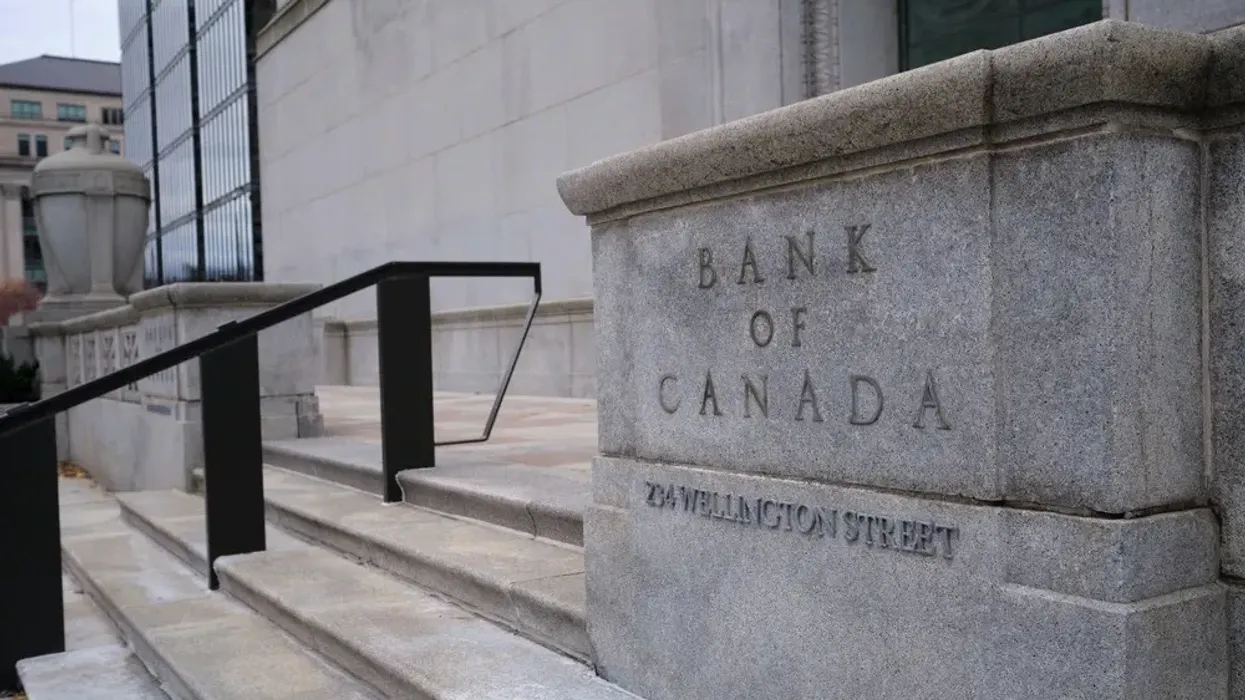Don’t hang your hopes on a rate cut any time soon, experts are saying.
This is on the heels of Canada’s latest GDP reading, which came in stronger than expected, growing by 3.1% in the first quarter of the year and outpacing Statistics Canada’s 2.5% forecast. Combined with April’s inflation uptick (the first since June 2022) it has sparked speculation amongst economists surrounding the rate realities that loom.
At the moment, it’s still pretty ambiguous. The Bank of Canada has remained tight-lipped on the outcome of Wednesday’s rate decision, and whether or not it will continue with the conditional pause that has held the overnight policy rate steady at 4.5% since March. The one thing that has been indicated with some certainty is that the BoC is “prepared to raise the policy rate further if needed” to slow the Canadian economy and bring inflation down to its 2% target.
This kind of language has “certainly left the door wide open for additional rate increases in 2023,” says Romana King, Senior Finance Editor with Finder. “Unfortunately, a tight labour market and continued global unrest mean that Canada’s economy isn’t slowing fast enough. In March, the Canadian economy added 35,000 new jobs, according to Statistics Canada and increased immigration is only adding to the country’s robust economic performance.”
In speaking with King and other experts on what might come of the next rate decision, slated for Wednesday, June 7, 2023, the consensus more or less seems to be that a pause is most likely, but an increase can't be ruled out.
“Going into the summer months, real estate sales activity is expected to slow and this will allow Canadians to adjust their spending to meet the higher costs of food and transportation. As a result, I predict the BoC will continue to hold its key rate for a third consecutive decision,” says King. “However, looking forward to the July and September rate announcements, if the Bank doesn’t see continued progress in a slowdown of core inflation, we can anticipate a more aggressive stance -- and further rate hikes.”
Similarly, Nikola Gradojevic, Professor of Finance at University of Guelph, says that he expects that the BoC will hold the rate steady on Wednesday due to the reality that “Canadians are already hurting from the high interest rates environment” as indicated by an “extremely high” proportion of consumer and business bankruptcies.
“From a political perspective, a rate increase in July rather than in June is more likely,” he continues, predicting an increase of 0.25% in July. “The inflation rate is not fully under control, driven mainly by the prices of gasoline, mortgage interest, and rents. Also, note that the official figures for the Consumer Price Index consider year-to-year changes and prices were already relatively high a year ago. Hence, there exists more risk for the economic recovery than it appears on the surface, and the BoC will have to manage it sooner rather than later.”
As well, Gradojevic cautions recession risk, saying “we may require a mild recession that will involve an erosion in GDP growth and increase in unemployment” in order to shrink inflation in a meaningful way.
James Laird, Co-CEO of Ratehub.ca and President of CanWise Lending, says that an imminent rate hike is “possible, but unlikely.”
“The Bank will probably await future incoming data to see if inflation and economic growth realign with their expectations before choosing to raise the rate further,” he continues, adding that, either way, the mortgage lending space is already being implicated. “Because a rate hike is now a possibility, fixed rates have already increased. Variable-rate holders who thought that rate hikes were over will be holding their breath to see if their rates are going to go up even further.”
Montreal Economic Institute Economist Emmanuelle B. Faubert anticipates a “mild increase” in the rate on Wednesday. While she is wary of making any precise predictions with respect to the BoC’s next moves, she is firm in her belief that spending has not been wrangled effectively enough so far in order to tempt the BoC to ease their measures.
Of course, rates take 12 to 18 months to work through the economy, so a delay in the desired economic slowdown is not necessarily a surprise. But still, she says, overspending tends to work against what the Bank is trying to achieve with the hikes in the first place.
“Given that [inflation] is currently sitting at 4.4%, it’s hard to imagine a scenario where we’re seeing a cut in the near future,” says Faubert. “Add that to Ottawa’s continued dive into red-ink budgets and we can expect the central bank will have a much tougher time getting back to its 2% inflation target. One thing that could certainly help though would be for governments to stop overstimulating an economy that’s already at full employment with large deficit spending.”
King adds that housing demand will likely need to come down well before the Bank can contemplate a cut.
“This doesn’t just mean we need to build more, it means that governments need to take a serious look at residential tenant policy and establish better regulations and more systematic processes that allow for sustainable rental policies to take root, particularly in the largest Canadian cities,” she says. “As long as tenants feel uncertainty about their future -- but secure in their employment -- there will be an overwhelming demand to find security. And, in Canada, this is found through homeownership.”





















